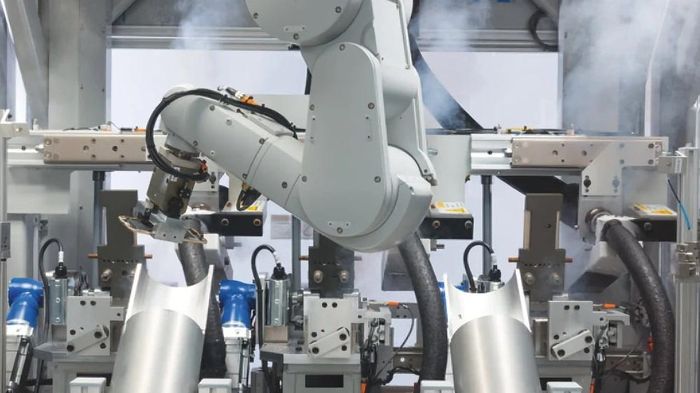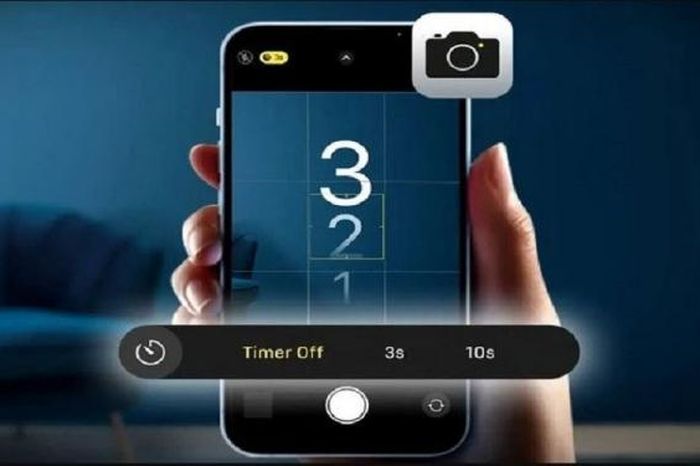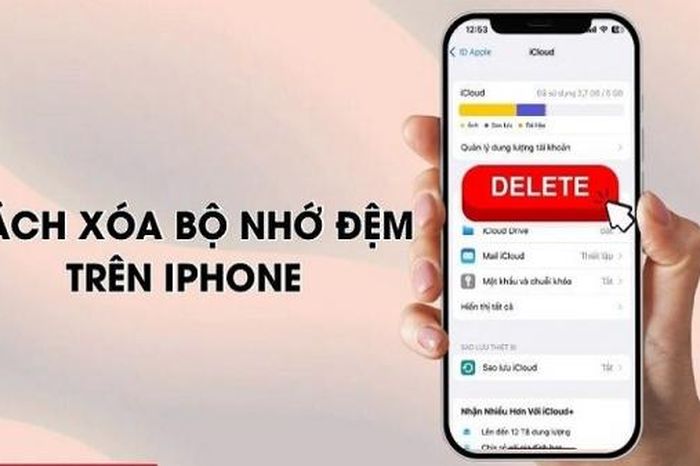Nearly 100,000 recycled iPhones were stolen
Apple has repeatedly promoted environmental protection when recycling old iPhones and other products handed in by customers through its innovative old collection program. By removing customers' old devices, Apple can disassemble hardware components and reuse some materials in future products.
Due to Apple's strict standards, recycling companies are constantly monitored to minimize the risk of product theft.
Recycle everything, no exceptions
In theory, the iPhone recycling program is quite simple. A customer gave Apple an old iPhone, which was then sent to the e-waste department to have its components disassembled.
After the battery and some other parts are removed, the remaining parts will be put into a demolition machine to turn it all into pieces of material. The process is also carried out with close supervision and secrecy, with metal detectors and surveillance cameras tracking the actions of employees at facilities like GEEP Canada.

During the first two years of the contract, Apple sent GEEP more than 530,000 recycled iPhones, 25,000 iPads, and 19,000 Apple Watches. However, an Apple audit found that nearly 100,000 iPhones that should have been recycled were operating in China.
Apple also discovered discrepancies in paperwork, as well as two boxes containing intact Apple Watch sets hidden away from cameras.
GEEP was sued by Apple in 2020 for $22.6 million for breach of contract, alleging that the company's employees had carefully orchestrated a plan to resell the hardware to the black market. Although GEEP acknowledged the problem, it blamed employees for causing the problem.
However, to date there has been no further action on the case and it is likely that it will be automatically dismissed within a few months.
Not only was this incident surprising because of the extent of the theft, but it also surprised observers that Apple was forcing recycling partners to shred thousands of recycled iPhones that could have been easily refurbished. again.
In addition to GEEP, other recycling partners face similar pressure from Apple to ensure everything that comes through the door is recycled, even if it still looks usable.
Since 2014, when Apple became a GEEP customer, thousands of products have been brought to the company's facility for recycling. Apple has required GEEP to install metal detectors, preventing employees from stealing components, but 'lost' components still occur.
Apple believes that shredding the device is necessary
Apple chose to crush old devices into pieces instead of melting them all down (which increases carbon emissions). The company believes that shredding the device will protect customer data from leaking out, this process also prevents components such as camera modules, chips. from being reused.
Apple previously dealt with a large-scale iPhone repair fraud case in China, which involved thieves buying iPhones from stores, taking parts and replacing them with damaged or counterfeit versions, then Return iPhone for replacement.
An Apple spokesperson said today's electronics recycling has advanced leaps and bounds since the GEEP lawsuit was filed, and the company is creating products that last longer to serve client.
One of those changes is the launch of an improved iPhone recycling robot, Daisy, replacing the first version - Liam. But Apple Insider believes this could be a PR move, with a very different story behind the scenes.
Around the time Apple introduced Daisy in the Netherlands, someone who was working at Re-Teck (another Apple recycling partner) witnessed tons of AirPods, Macs, and Apple Watches being crushed, many of them crushed. of which seems to work fine. In some cases, the employee said, workers would use hammers to break equipment.
iFixit co-founder Kyle Wiens believes that shredding working devices that can be repaired or used as spare parts should be illegal.
You should read it
- Compare iPhone 13 and iPhone 12
- iPhone 12 marks 13 years of change for Apple
- Compare iPhone 13 Pro and iPhone 12 Pro
- How has the iPhone evolved, from 2007 to 2017?
- The best minimalist wallet for 2020
- Should I upgrade my iPhone X to iPhone 13?
- Should iPhone 7, 7+ update iOS 14?
- The difference between iPhone 6S and iPhone 6S Plus?
May be interested
- Instructions on how to use Mail on iPhone extremely well and conveniently
 by default, the mail application is always pre-installed on iphones, but very few people do not know how to use this application optimally.
by default, the mail application is always pre-installed on iphones, but very few people do not know how to use this application optimally. - The camera on iPhone 16 Pro will have a breakthrough upgrade
 although the iphone 16 pro has not yet been released, there has been a series of leaked news about the new iphone model appearing on social networking sites.
although the iphone 16 pro has not yet been released, there has been a series of leaked news about the new iphone model appearing on social networking sites. - iPhone shows Home notification, how to turn it off?
 the 'apple' brothers are upset because their iphone shows a home notification? don't worry, tipsmake has detailed instructions for turning off this notification in the article.
the 'apple' brothers are upset because their iphone shows a home notification? don't worry, tipsmake has detailed instructions for turning off this notification in the article. - How to set a timer to take photos on iPhone is extremely simple and not everyone knows
 timing photos on iphone will help you take photos with family, relatives, and friends without missing any members. let's immediately learn how to set up a timer to take photos on iphone through the article below.
timing photos on iphone will help you take photos with family, relatives, and friends without missing any members. let's immediately learn how to set up a timer to take photos on iphone through the article below. - Instructions on how to clear application cache on iPhone are super simple
 how to clear iphone cache is often applied when the device runs out of space. furthermore, regularly cleaning the cache also helps improve your device's performance. the article below will show you more ways to clear application cache on iphone.
how to clear iphone cache is often applied when the device runs out of space. furthermore, regularly cleaning the cache also helps improve your device's performance. the article below will show you more ways to clear application cache on iphone. - China's decade of iPhone manufacturing dominance is about to end?
 china's decades-long dominance as apple's top iphone production base may come to an end as indian alternatives ramp up production.
china's decades-long dominance as apple's top iphone production base may come to an end as indian alternatives ramp up production.






 How to Check for a Stolen iPhone
How to Check for a Stolen iPhone How to turn on iPhone protection when stolen
How to turn on iPhone protection when stolen Google will use recycled materials in all its hardware products in the near future
Google will use recycled materials in all its hardware products in the near future New features on iOS 17.3 beta make iPhone thieves 'cry'
New features on iOS 17.3 beta make iPhone thieves 'cry' Buy retail laptop battery is very easy to 'stick' recycling products
Buy retail laptop battery is very easy to 'stick' recycling products